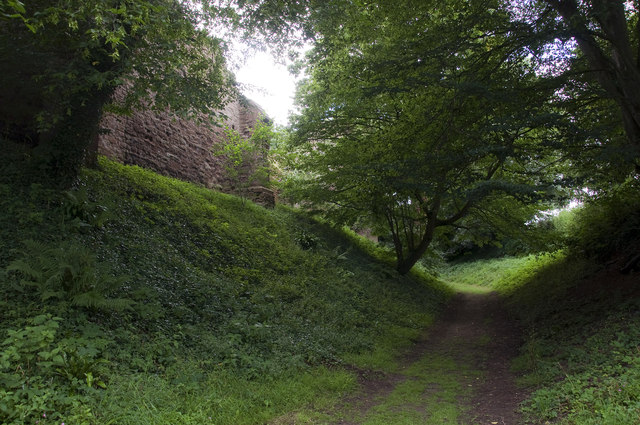Dry Moat, Wilton Castle
Introduction
The photograph on this page of Dry Moat, Wilton Castle by Stuart Wilding as part of the Geograph project.
The Geograph project started in 2005 with the aim of publishing, organising and preserving representative images for every square kilometre of Great Britain, Ireland and the Isle of Man.
There are currently over 7.5m images from over 14,400 individuals and you can help contribute to the project by visiting https://www.geograph.org.uk

Image: © Stuart Wilding Taken: 20 Jul 2014
Wilton Castle probably started as a timber motte and bailey castle. The ruins that are there today are mostly from the twelfth century castle, with fourteenth century towers, built from local red sandstone. The castle had an unremarkable history and by the sixteenth century its military significance had declined. A manor house was built using stone from other parts of the castle but this wasn't to stand for long. At the outbreak of the Civil War, the owner, Sir John Bridges, refused to declare for either side. Thus, on a Sunday morning in the spring of 1645, he returned home from church to find his house engulfed in flames. Sir John immediately declared for the parliamentarians. In 1731 the estate was bought by the trustees of Guys Hospital, under their stewardship a new house was added and extended in the eighteenth century. They sold the estate in 1961. By then the castle was mostly forgotten despite the substantial ruins and standing close to the A40. Sue and Alan Parslow bought the castle in 2002 and in partnership with English Heritage have undertaken a comprehensive programme of restoration. The Castle is currently open on Wednesday and Sunday afternoons, June to August. Along with selected other dates. http://www.wiltoncastle.eclipse.co.uk/open_days.html

